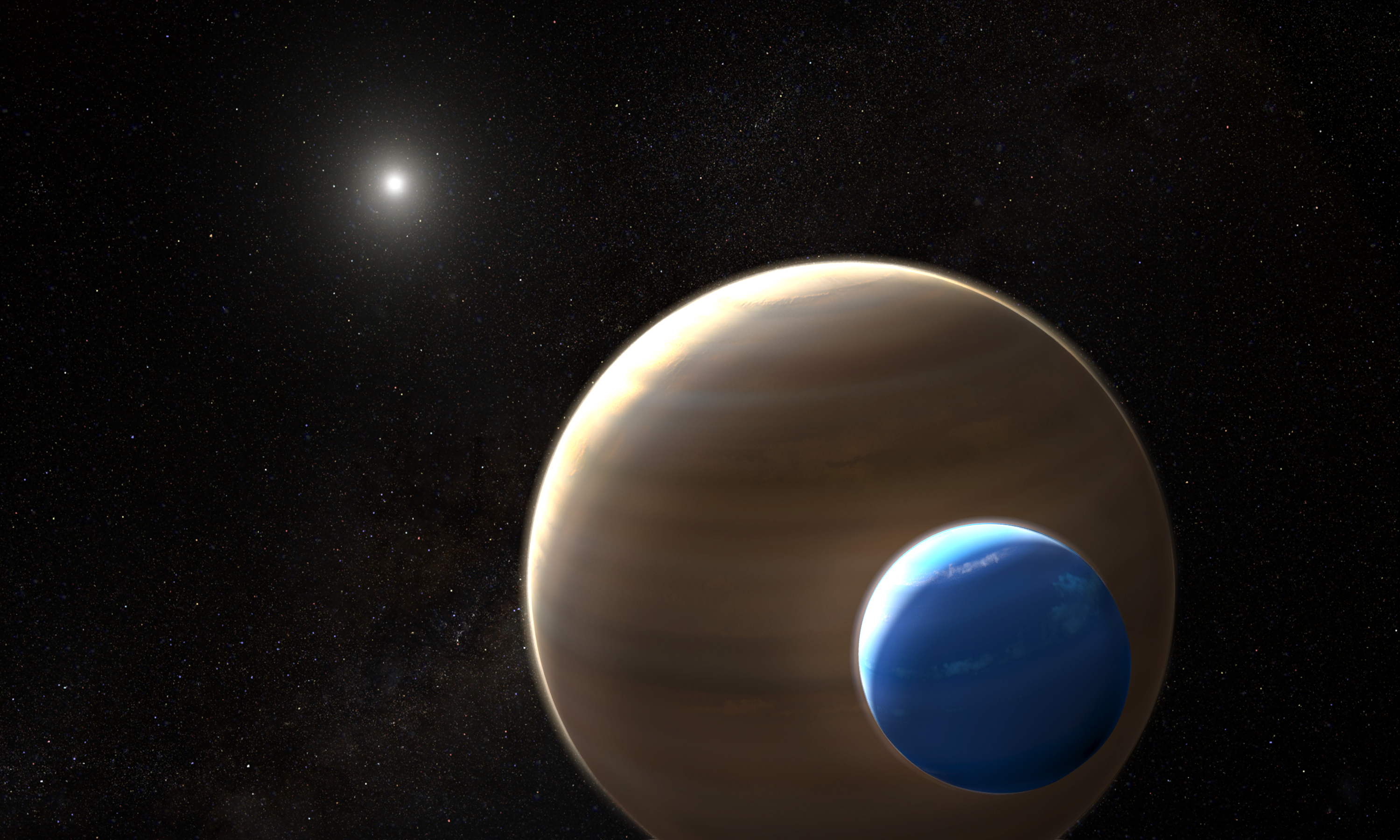6 exomoons orbiting alien worlds? Well, it's complicated.
That's no moon, not necessarily.

Scientists have spotted thousands of worlds in other solar systems, so many that exoplanets have become a dime a dozen. But in our neighborhood, three quarters of planets have at least one moon, and no such object in other systems has been confidently discovered so far — such worlds are just too small and far away.
Now, a new paper points to six exoplanets where wobbles in their data may be caused by exomoons. But that doesn't necessarily guarantee the presence of such moons, and there's no way right now for scientists to determine the real details of the situation. Those are big challenges for any research to overcome.
"We can say these six new systems are completely consistent with exomoons," lead author Chris Fox, a doctoral candidate at Western University in Canada, said in a statement. "But we don't have the technology to confirm them by imaging them directly. That will have to wait for further advancements."
Related: First exomoon found? Neptune-sized world possibly spotted orbiting alien planet
But exomoons are tantalizing enough that scientists don't want to simply wait around, Alex Teachey, a doctoral candidate at Columbia University who specializes in exomoons, told Space.com via email.
"We think finding moons could yield a variety of insights about the formation and evolution of other planetary systems, help contextualize our own solar system (how common or uncommon we are) and are potentially attractive places to look for life elsewhere in the galaxy."
That said, the approach in the new study may not be the best way to hunt for exomoons, Teachey said. The researchers pored over data gathered by NASA's now-retired Kepler Space Telescope, which has identified many of the more than 4,000 exoplanets scientists know of to date.
Breaking space news, the latest updates on rocket launches, skywatching events and more!
Kepler's main tactic for studying exoplanets was to stare at individual stars and measure their brightness. If a planet and its star align properly with the telescope, the star will dim briefly as the planet crossed its disk, or transited, across the telescope's view. The larger the planet, the more the star dims during a transit.
But sometimes, brightness data about a transit seems a bit messy. There's a wiggle here or there, and it doesn't go away. That's when scientists start wondering whether they might be seeing something else, not just a planet.
And it's that type of transit that the scientists on the new research chose to study. The research is described in a submitted paper that has not yet undergone peer review and that was posted to the preprint server arXiv.org on June 23.
The researchers looked at eight stars with transits that seemed rhythmically just a bit off. Instead of a perfect metronome of orbits, occasionally the transit came a bit earlier or later than scientists would have predicted. And for six of those stars, the scientists on the new research found, the cause of that syncopation could be a moon.
The problem is, the cause could be a lot of other things as well, in particular another planet in the system that happens not to cross between the star and our telescopes, so scientists haven't identified it yet.
"One question we have to wrestle with is, how plausible is a moon in a given system, particularly a massive moon?" Teachey said. "We don't really have a good answer for that right now. On the other hand, we know a non-transiting planet is very plausible. That doesn't mean that's the explanation, but it is quite conceivable."
In particular, Teachey said, he would want to see more signals of an exomoon's influence on the transit, in particular a moon itself transiting the star. The systems the researchers studied are too small for that sort of signal to appear, and Teachey said that scientists still have a lot of analysis to do on the Kepler data that would show such signs.
And on those transits, he said, scientists could rule out more alternatives, increasing the strength of an exomoon hypothesis, rather than simply failing to rule out an exomoon as the cause of a transit's quirks.
"There's a lot of stones to turn over before we start feeling like a moon is the best explanation," Teachey said.
- 7 ways to discover alien planets
- Photographing an exoplanet: how hard can it be?
- The strangest alien planets in pictures
Email Meghan Bartels at mbartels@space.com or follow her @meghanbartels. Follow us on Twitter @Spacedotcom and on Facebook.
OFFER: Save 45% on 'All About Space' 'How it Works' and 'All About History'!
For a limited time, you can take out a digital subscription to any of our best-selling science magazines for just $2.38 per month, or 45% off the standard price for the first three months.

Meghan is a senior writer at Space.com and has more than five years' experience as a science journalist based in New York City. She joined Space.com in July 2018, with previous writing published in outlets including Newsweek and Audubon. Meghan earned an MA in science journalism from New York University and a BA in classics from Georgetown University, and in her free time she enjoys reading and visiting museums. Follow her on Twitter at @meghanbartels.

